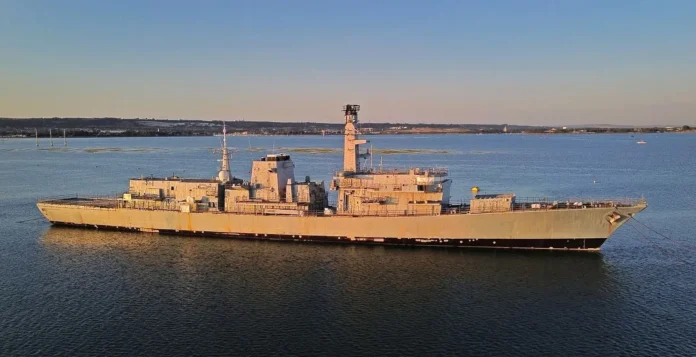The Royal Navy is struggling to meet its global commitments as ship numbers fall, personnel shortages deepen and long-term underfunding takes its toll. Defence analysts warn that the fleet’s ability to protect Britain’s interests is at its lowest point in decades, raising fears the service is approaching a crisis.
In the past three years (Aug 2022–2025), the Navy has decommissioned two amphibious assault ships, four frigates, one nuclear-powered attack submarine, five minehunters, two survey vessels and two tankers. Several other vessels are laid up long-term. Over the same period, the RN has received only one new submarine and purchased two merchant vessels for conversion.
The consequences are already visible. Britain can no longer sustain naval operations in the Middle East, leaving almost no permanent presence in the region. Carrier strike groups have deployed without adequate escorts, while no attack submarines have been available to monitor Russian activity near UK waters. Smaller patrol craft are being sent to major exercises where warships would have previously been used, and overseas commitments are increasingly maintained by lightly armed offshore patrol vessels.
‘Hollowed Out’ Fleet
The Navy’s decline is not the result of combat losses, but a combination of underinvestment, delayed procurement and flawed strategic decisions. Experts say the service is now “incapable of performing many of the routine tasks” it carried out until recently.
Official statements continue to paint an optimistic picture, describing the RN as “world-leading” and “globally deployed”. However, these claims often ignore long delivery schedules, capability gaps and delays in bringing new systems into service. Even the Navy’s own website still lists decommissioned vessels as part of the fleet.
Funding Gap and Industrial Strain
The Ministry of Defence’s latest Equipment Plan identifies a £16.9 billion funding shortfall across defence, forcing the RN to defer investment in maintenance, infrastructure and stockpiles. Refit periods have lengthened, readiness has fallen, and many ships are operating at the limits of their endurance.
Shipbuilding capacity, heavily reduced after the Cold War, remains under strain. Gaps in major construction programmes during the 1990s and 2000s eroded skills and facilities, and although investment has resumed, the industrial base is struggling to meet demand.
Procurement processes remain slow and costly, with the MoD often commissioning highly complex, bespoke designs in small numbers. Smaller, faster projects are regularly blocked by bureaucracy, and promising innovations are delayed or abandoned.
Manpower Shortages
Personnel issues are compounding the crisis. Between 2022 and 2023, the Navy lost 1,600 trained personnel, with shortages particularly acute in engineering and specialist technical roles. The Royal Fleet Auxiliary is facing similar challenges, as pay lags behind commercial shipping rates during a global shortage of mariners.
Carriers Not to Blame
Some critics have claimed the Navy’s two aircraft carriers are the source of its difficulties, but analysts argue that removing them would weaken the case for a balanced fleet. The ships’ running costs are lower than often stated, and the capital expenditure has already been absorbed.
Future Prospects
There are signs of potential recovery. Thirteen new frigates, two attack submarines, four ballistic missile submarines and three support ships are either in build or on order. The first Type 26 and Type 31 frigates are expected to enter service from 2027–28, but experts warn there will be little improvement in overall numbers for at least five years.
Progress on unmanned and autonomous systems remains slow, with most projects still experimental. Only three frigates have so far received the Naval Strike Missile, despite a 2022 commitment to fit the weapon to 11 ships, and Sea Ceptor missiles will not be installed on all six Type 45 destroyers until 2032.
The UK defence budget is set to rise from £56.9 billion in 2024/25 to £59.8 billion in 2025/26, with a stated aim to reach 2.5% of GDP by 2027 and ambitions for 3% or even 5% by 2035. However, these increases are dependent on economic conditions, and high inflation could reduce their impact.
Defence experts warn that without an immediate boost in funding and radical reform of procurement and personnel policies, the Royal Navy may be unable to respond effectively to future crises, a risk many believe is rising as the UK faces what some call a “pre-war period”.
















